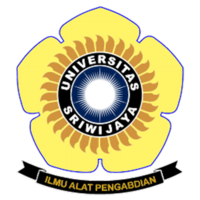Monitoring Keberhasilan Rehabilitasi Hutan Mangrove Bekas Tambak Terbengkalai
Abstract
Basyuni M. 2022. Monitoring the success of the mangrove forests rehabilitation on abandoned ponds. In: Herlinda S et al. (Eds.), Prosiding Seminar Nasional Lahan Suboptimal ke-10 Tahun 2022, Palembang 27 Oktober 2022. pp. 14-17. Palembang: Penerbit & Percetakan Universitas Sriwijaya (UNSRI).
Mangrove forest in Lubuk Kertang Village, Brandan Barat, Langkat, Indonesia has been converted about 20 ha annually from 1996-2016 into non-forest land use. Rehabilitation can be a solution to restore the condition of the ecosystem in order to carry out its ecological and economic functions. This paper discusses the evaluation of rehabilitation carried out with different planting materials, with the planting of 6000 Rhizophora apiculata propagules in December 2015 and 5000 R. apiculata seedlings in May 2016 on abandoned ponds in Lubuk Kertang village. Monitoring performed every 6 months from 2016 to 2022. For 48 months, monitoring was done by sampling and starting in 2019, census monitoring was carried out when seedlings grewto sapling and tree level in December 2019 to May 2022. Measurements in 2021 were not carried out due to the Covid-19 pandemic 19 was at its peak. The results of the study showed that during the rehabilitation activities, the forest became heterogeneous from one species increased to 6 species with propagule material and 8 species with seedling planting material. Rehabilitation activities in Lubuk Kertang Village is a clear example of the success of species diversity, number of individual plants, and carbon stocks.
Mangrove forest in Lubuk Kertang Village, Brandan Barat, Langkat, Indonesia has been converted about 20 ha annually from 1996-2016 into non-forest land use. Rehabilitation can be a solution to restore the condition of the ecosystem in order to carry out its ecological and economic functions. This paper discusses the evaluation of rehabilitation carried out with different planting materials, with the planting of 6000 Rhizophora apiculata propagules in December 2015 and 5000 R. apiculata seedlings in May 2016 on abandoned ponds in Lubuk Kertang village. Monitoring performed every 6 months from 2016 to 2022. For 48 months, monitoring was done by sampling and starting in 2019, census monitoring was carried out when seedlings grewto sapling and tree level in December 2019 to May 2022. Measurements in 2021 were not carried out due to the Covid-19 pandemic 19 was at its peak. The results of the study showed that during the rehabilitation activities, the forest became heterogeneous from one species increased to 6 species with propagule material and 8 species with seedling planting material. Rehabilitation activities in Lubuk Kertang Village is a clear example of the success of species diversity, number of individual plants, and carbon stocks.
Keywords
forest, mangrove, monitoring, rehabilitation
Full Text:
PDFArticle Metrics
Abstract view : 340 timesPDF - 612 times
Refbacks
- There are currently no refbacks.

